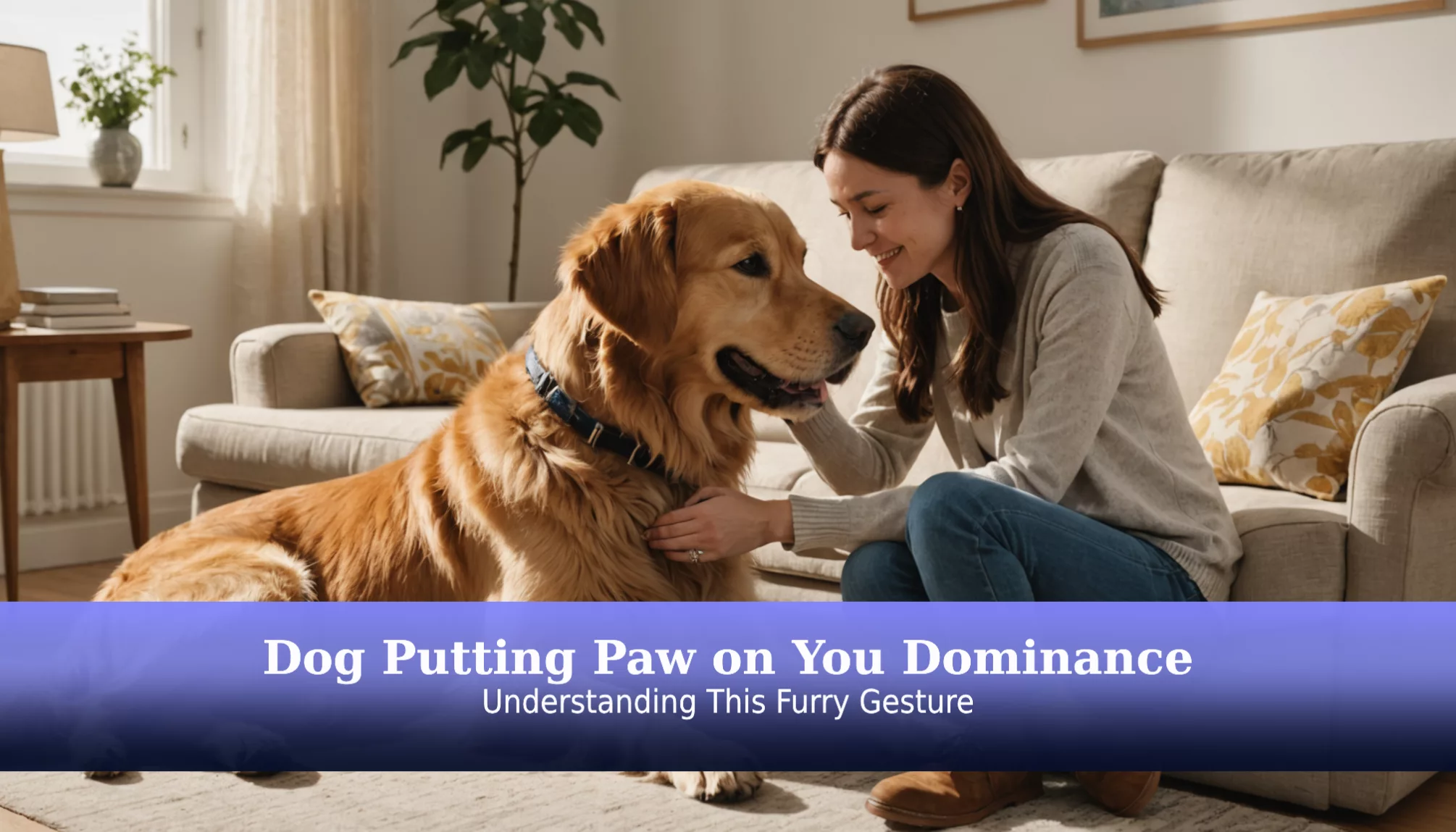Have you ever wondered why your dog puts their paw on you? This adorable gesture can reveal a lot about your furry friend, especially when it comes to dog putting paw on you dominance. Understanding this common dog behavior is crucial for dog owners, as it can help strengthen the bond between you and your pup while also clarifying their needs and emotions.
Ignoring these signs might lead to misunderstandings and stress for both you and your pet. In this article, we will explore the reasons why your dog might be putting their paw on you, the difference between affection and dominance, and how to respond appropriately. Plus, we’ll share tips on training your dog to communicate more effectively. Get ready to dive into the fascinating world of canine behavior and learn how to enhance your special connection with your four-legged companion!
Understanding Your Dog’s Pawing Behavior
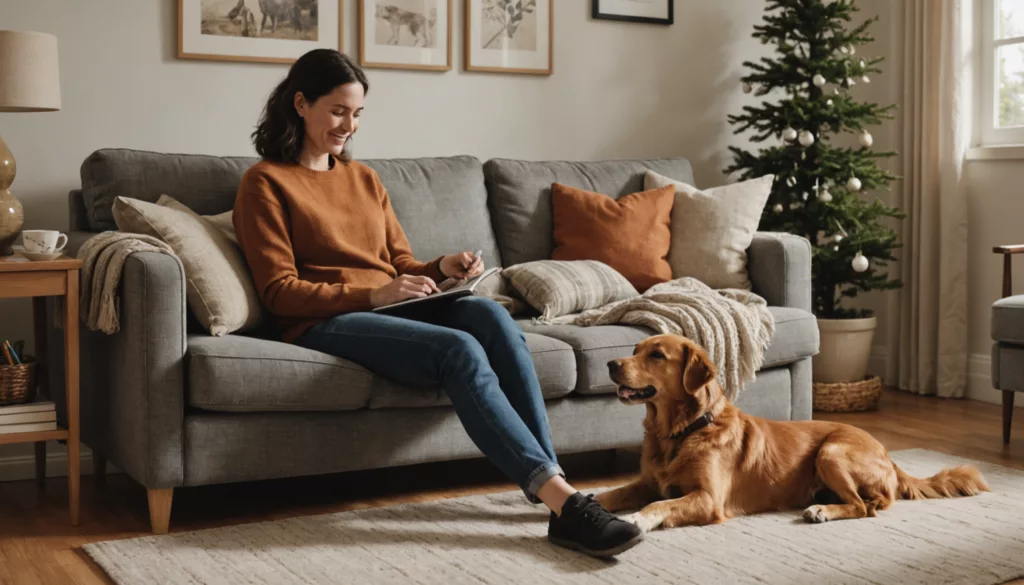
Dogs communicate through various behaviors, and pawing is one of their most common ways to express themselves. This section explores the meanings behind pawing behavior and its role in strengthening the bond between dogs and their owners.
What Does It Mean When a Dog Puts Its Paw on You?
Dogs use their paws as communication tools to express affection and needs. A paw placed on a person typically signals:
- A desire for attention
- A show of affection
- A request for food or playtime
- A need for comfort or reassurance
This natural behavior helps dogs build social bonds with their human family members. Dogs evolved these communication skills over thousands of years of living alongside humans.
The Role of Pawing in Dog Behavior
Pawing serves multiple purposes in canine communication. A dog may use this gesture to:
- Express excitement during play
- Show contentment during petting
- Request attention or interaction
- Seek comfort when anxious
- Signal basic needs like food or outdoor access
Different situations create distinct pawing patterns. Gentle, relaxed pawing often means something different than urgent or repeated pawing motions.
Signs of Affection: When a Dog Puts Their Paw
Affectionate pawing comes with specific body language signals:
- Relaxed facial expression
- Soft eye contact
- Loose, waggy tail
- Calm breathing
- Gentle paw placement
Dogs read human emotional responses well. Their pawing often matches the emotional tone of interactions. This behavior strengthens the connection between dogs and their owners through physical touch and emotional exchange.
Quick Fact: Dogs developed specialized muscles around their eyes to better communicate with humans. This adaptation helps them express emotions through facial expressions similar to human children.
References:
Dog Behavior – Wikipedia
Dog Communication – Wikipedia
Is Your Dog Putting Their Paw on You a Sign of Dominance?
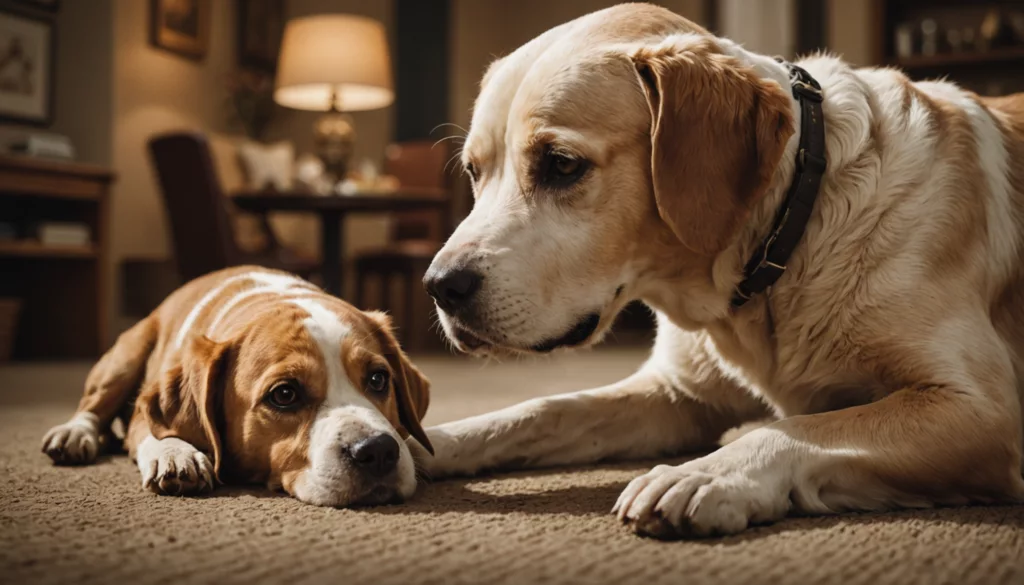
Dogs use paw placement as a key form of communication. Understanding this behavior helps build stronger bonds between dogs and their human family members.
Differences Between Affection and Dominance
A dog’s paw placement carries different meanings based on body language and context. Gentle, relaxed pawing often shows affection. The dog maintains soft eye contact and a loose body posture. Dominant pawing includes stiff body language, direct staring, and standing tall over others.
Key signs of affectionate pawing:
- Relaxed muscles and facial expression
- Gentle touch with the paw
- Tail wagging at medium height
- Soft eye contact
When Pawing Becomes a Sign of Anxiety
Dogs sometimes put their paw on humans when feeling stressed or uncertain. This behavior seeks comfort and reassurance. Common anxiety signs include: Common anxiety signs include panting, pacing, or hiding. When a dog feels anxious, it may also display dog separation anxiety signs, such as excessive barking or attempting to escape when left alone. Understanding these signals can help owners provide the necessary support and create a more secure environment for their pets.
- Repeated pawing with whining
- Pacing or restlessness
- Excessive physical contact
- Tense body posture
Many dogs show increased pawing during stressful events like thunderstorms or when separated from family members.
How to Respond If Your Dog Puts Their Paw Out of Dominance
When dogs display dominant pawing, remain calm and redirect the behavior. Follow these steps:
- Stand up slowly and move away
- Ask the dog to perform a basic command like “sit”
- Reward calm, obedient behavior with treats
- Maintain consistent boundaries
Training tip: Never punish pawing behavior. This may increase anxiety and worsen dominance issues. Instead, reward alternative behaviors that show respect and calmness.
Expert sources recommend working with a professional dog trainer if dominant behaviors persist. Regular training strengthens positive communication between dogs and their human family members.
Teaching Your Dog to Use Their Paw Appropriately
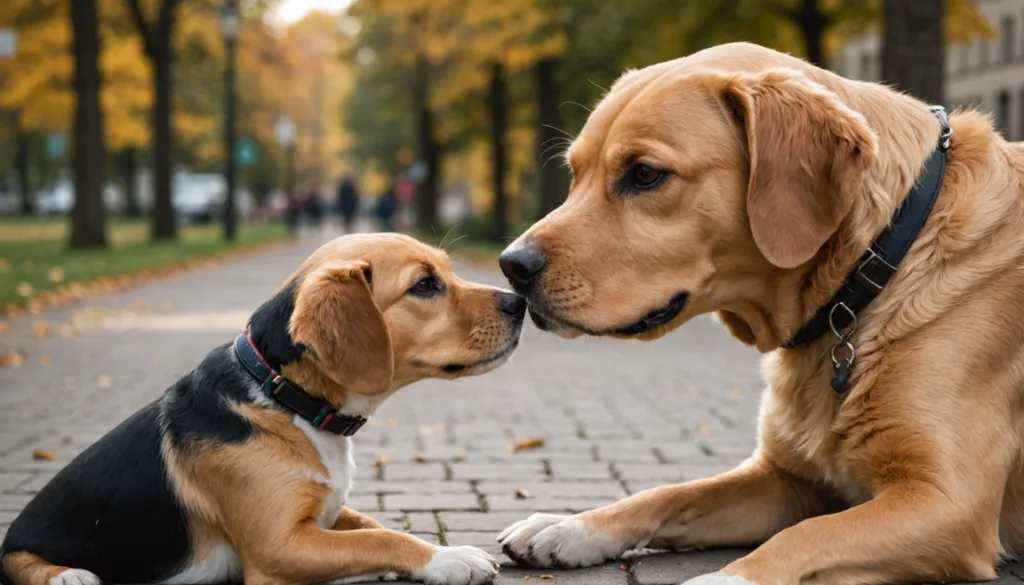
Dogs use their paws as a natural form of communication. Training helps shape this instinct into appropriate behavior that strengthens the bond between dogs and their human companions.
Training Techniques to Reinforce Positive Behavior
Positive reinforcement creates lasting results in paw training. Here are proven methods to encourage good pawing habits:
- Give treats and praise when the dog uses gentle paw touches
- Click a training device and reward proper paw placement
- Use simple commands like “paw” or “touch” with rewards
- Practice short training sessions of 5-10 minutes
- Maintain consistency with commands and rewards
The key is marking and rewarding the exact behavior to help dogs understand what actions earn positive feedback.
Understanding Paw Sensitivity in Dogs
Dogs have varying levels of paw sensitivity that affect their pawing behavior:
- Breed differences impact natural paw use and sensitivity
- Past experiences shape how comfortable dogs feel using their paws
- Medical conditions may cause paw discomfort
- Some dogs are naturally more tactile than others
- Environmental factors like temperature affect paw sensitivity
Reading these individual traits helps create an effective training approach for each dog.
Common Mistakes in Dog Paw Training
Several common training errors can hinder progress:
- Misinterpreting pawing as pure dominance behavior
- Ignoring the context of the pawing
- Punishing rather than redirecting unwanted pawing
- Failing to reward good paw manners
- Expecting too much progress too quickly
Focus on understanding the dog’s communication style and responding with patience and positivity. This builds trust while teaching appropriate paw use.
The goal is creating clear boundaries for paw behavior while maintaining the natural bonding that appropriate pawing provides. With consistent training and attention to individual needs, dogs learn to use their paws in ways that enhance the human-canine relationship.
Exploring the Bonding Aspect of Dog Pawing
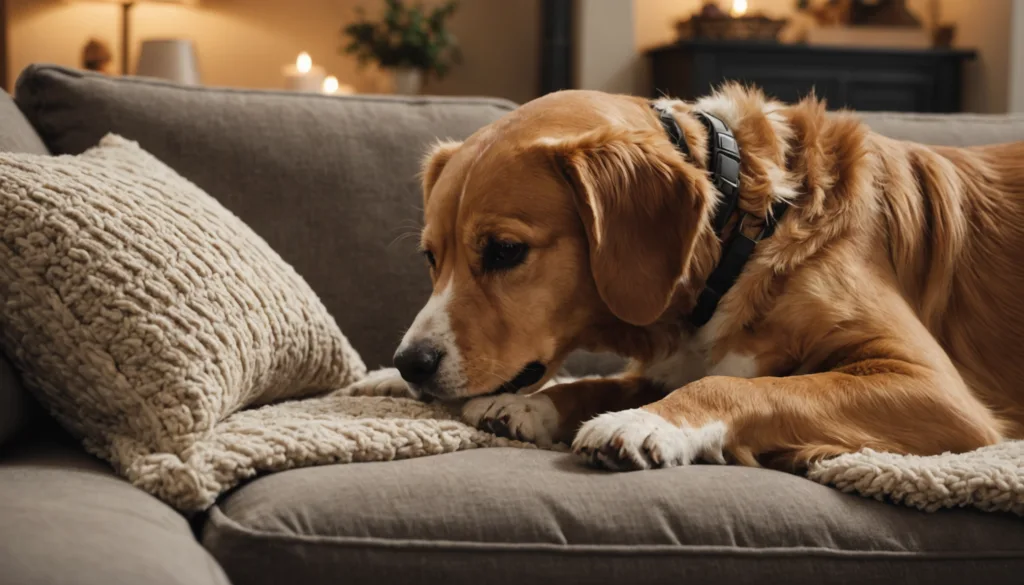
Physical touch creates powerful connections between dogs and their human companions. Dogs use pawing to express needs, seek comfort, and build trust. Understanding this behavior helps create stronger bonds with canine friends.
Petting and Its Role in Strengthening the Bond
Dogs communicate through touch, including gentle paws on their owners. This natural behavior shows trust and seeks connection. Studies confirm that positive physical interactions release bonding hormones in both dogs and humans. Regular petting leads to increased affection and deeper relationships between dogs and their families.
Key benefits of petting include:
- Release of oxytocin that promotes bonding
- Creation of mutual trust and security
- Development of social confidence
- Enhancement of emotional connections
Reassurance Through Pawing Behavior
Dogs use pawing to seek comfort during uncertain moments. A gentle paw touch signals the need for reassurance or attention. This behavior helps dogs feel secure while strengthening their bond with owners.
Common reasons for reassurance pawing:
- Response to loud noises or storms
- Reaction to new situations
- Need for emotional support
- Desire for physical closeness
Building Healthy Relationships
Clear communication builds strong bonds between dogs and their families. Training with positive reinforcement teaches dogs appropriate ways to seek attention through pawing. This creates mutual understanding and respect.
Tips for positive relationships:
- Reward gentle pawing behaviors
- Maintain consistent training methods
- Set clear boundaries for interactions
- Spend quality time in shared activities
Dogs use pawing to express affection and build trust. Responding with patience and understanding creates lasting bonds between dogs and their human companions. Regular positive interactions through touch help develop secure, loving relationships that benefit both species.
Current Research on Dog Behavior and Pawing Gestures
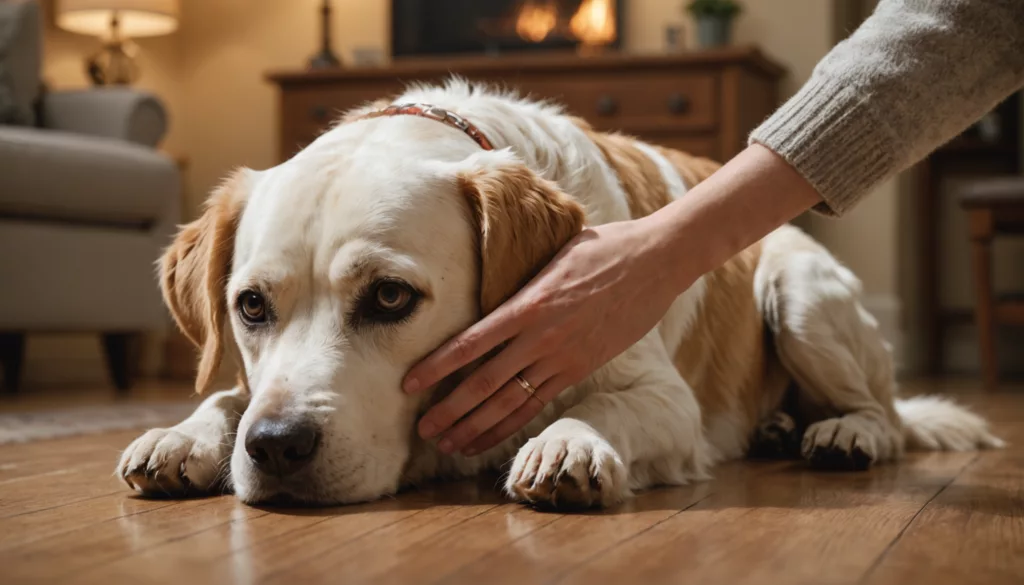
Recent scientific studies reveal fascinating insights into how dogs use pawing to communicate. Research shows that dogs display remarkable social intelligence through their paw gestures and body language. Understanding these behaviors helps create stronger bonds between dogs and their human families.
Studies on Canine Communication and Interpretation
Scientists have discovered that dogs read and respond to human emotions with surprising accuracy. Research from the Journal of Veterinary Behavior shows that dogs use pawing as part of their social communication toolkit. When dogs place their paw on humans, they often match their gesture to the person’s emotional state. For example, dogs paw more gently with children and more firmly with adults.
Insights from Experts on How Dogs Use Their Paws
Veterinary behaviorists note that pawing serves multiple communication purposes in dogs. Studies from the Applied Animal Behaviour Science journal reveal that dogs use pawing to:
- Request attention or resources
- Show affection and strengthen social bonds
- Express anxiety or discomfort
- Seek reassurance during stressful situations
Future Trends in Understanding Dog Behavior
New research technologies are expanding our knowledge of dog communication. Current studies focus on:
- Brain imaging to understand emotional processing during pawing
- Video analysis of paw gestures in different contexts
- Breed-specific variations in pawing behavior
- Connection between early socialization and pawing habits
Modern research tools help decode subtle differences between attention-seeking, affectionate, and anxious pawing. This knowledge leads to better training methods and stronger human-dog relationships. Scientists continue to study how dogs adapt their pawing behavior to communicate effectively with humans.
Key Research Findings
- Dogs adjust pawing intensity based on human responses
- Pawing patterns differ between familiar and unfamiliar humans
- Early socialization shapes how dogs use pawing to communicate
Conclusion
Understanding why your dog puts their paw on you is key to building a better bond with your furry friend. This behavior can mean many things, from showing affection to seeking your attention or even expressing anxiety. It’s essential to recognize the difference between a loving gesture and a sign of discomfort.
By teaching your pup the right way to use their paw and interpreting their body language, you can strengthen your connection even further. Remember, dogs are social animals that thrive on interaction, so always look for ways to engage with your pet. Keep exploring the fascinating world of dog behavior, and you’ll discover even more ways to enhance your special relationship with your canine companion!
FAQs
1. Why do dogs put their paw on people?
Dogs use pawing to communicate several needs:
- Show affection and seek connection
- Request attention or playtime
- Signal basic needs like food or outdoor time
- Express emotional states such as anxiety
2. Does pawing indicate dominance?
Pawing rarely signals dominance in dogs. Look for these signs to understand the intent:
- Relaxed body posture suggests friendly communication
- Wagging tail typically means positive interaction
- Gentle, non-forceful touch indicates affection
- Context helps determine the meaning
3. What’s the best way to respond to pawing?
Consider these response strategies:
- Acknowledge gentle pawing with brief attention
- Redirect excessive pawing to another activity
- Reward calm behavior with treats
- Maintain consistent responses to set clear boundaries
4. When might pawing signal anxiety?
Watch for these anxiety indicators with pawing:
- Repeated, insistent pawing
- Tense body language
- Occurring during stressful situations
- Accompanied by whining or pacing
5. How can owners teach appropriate pawing?
Train proper pawing behavior through:
- Positive reinforcement training
- Clear command words
- Consistent practice sessions
- Gentle correction of unwanted pawing

